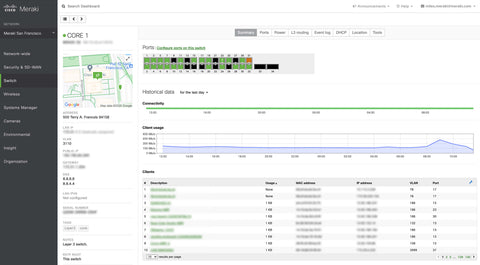Introduction
In modern network infrastructures, Virtual Local Area Networks (VLANs) play a crucial role in simplifying network segmentation and management. VLANs provide a flexible and efficient way to logically divide a physical network into multiple virtual networks, allowing for improved security, performance, and scalability. In this guide, we will explore the concept of VLANs, their benefits, and how they simplify network segmentation and management. By understanding VLANs, you can enhance the flexibility and efficiency of your network architecture.
What are VLANs?
A VLAN is a virtual network created within a physical network infrastructure. It allows you to group devices logically, irrespective of their physical location, into separate broadcast domains. VLANs enable you to divide a large network into smaller, more manageable segments without the need for separate physical networks.
Benefits of VLANs
-
Network Segmentation: VLANs facilitate network segmentation, allowing you to logically separate devices based on factors such as department, location, function, or security requirements. Each VLAN operates as a separate virtual network, improving security and reducing the scope of potential network issues.
-
Enhanced Security: VLANs provide a layer of security by isolating network traffic within each VLAN. Devices in one VLAN cannot directly communicate with devices in other VLANs unless explicitly allowed. This segregation reduces the risk of unauthorised access and limits the impact of security breaches.
-
Improved Performance: By dividing a network into VLANs, you can control broadcast traffic and reduce network congestion. Broadcasts are limited to devices within the same VLAN, preventing unnecessary network-wide broadcasts that can degrade overall performance.
-
Flexibility and Scalability: VLANs offer flexibility and scalability, allowing you to easily adapt your network to changes and growth. New devices can be assigned to appropriate VLANs without the need for physical rewiring or infrastructure changes. VLANs can also be expanded or reconfigured as per evolving network requirements.
-
Simplified Network Management: VLANs simplify network management by enabling centralised control and administration. Network administrators can configure VLAN membership, security policies, and quality of service (QoS) settings for each VLAN, making it easier to enforce network policies and troubleshoot specific VLANs if issues arise.
VLAN Implementation
To implement VLANs effectively, you'll need the following components:
-
Managed Switches: Managed switches support VLAN functionality, allowing you to create, configure, and manage VLANs. They provide the necessary intelligence to tag and route VLAN traffic.
-
VLAN Membership: Devices within the network must be assigned to appropriate VLANs based on predefined criteria. This can be achieved through port-based VLAN assignments, MAC address-based assignments, or using IEEE 802.1Q VLAN tagging.
-
VLAN Trunking: Trunking allows the passage of VLAN traffic across multiple switches. Trunk ports carry VLAN-tagged traffic, enabling devices in different VLANs to communicate with each other.
-
VLAN Routing: To enable inter-VLAN communication, a layer 3 device, such as a router or a layer 3 switch, is required. These devices perform routing between VLANs, allowing traffic to flow between different VLANs while maintaining security and control.
Conclusion
VLANs simplify network segmentation and management by creating virtual networks within a physical infrastructure. They offer benefits such as improved security, enhanced performance, flexibility, and simplified administration. By implementing VLANs, you can effectively divide your network into logical segments, control traffic flow, and enforce security policies. Understanding VLANs and their role in network architecture will empower you to design and manage a more scalable, secure, and efficient network infrastructure.



